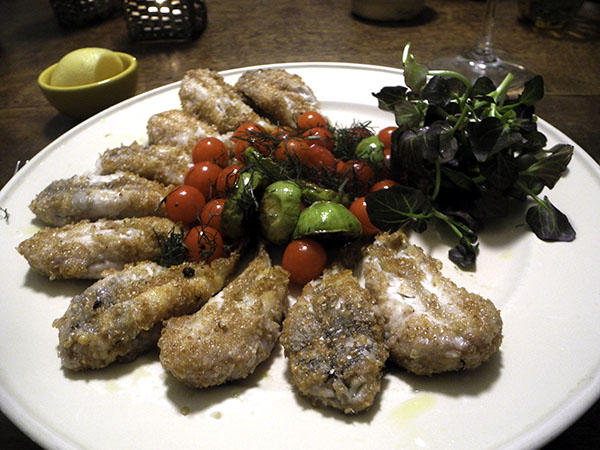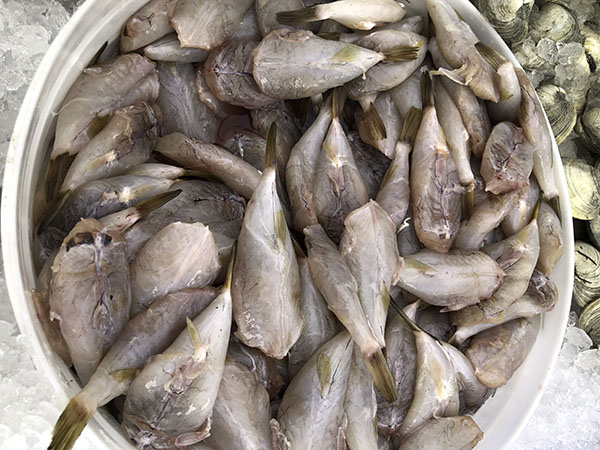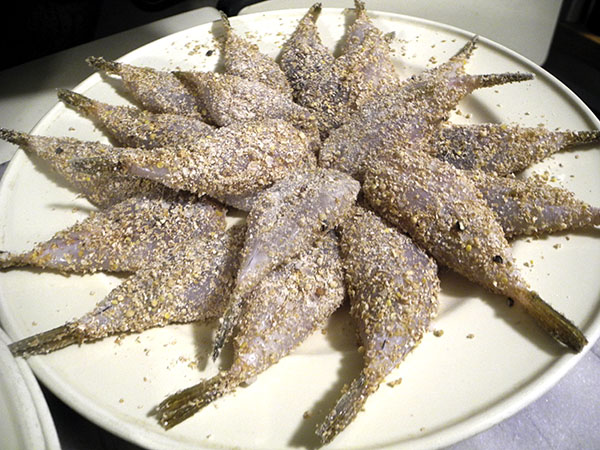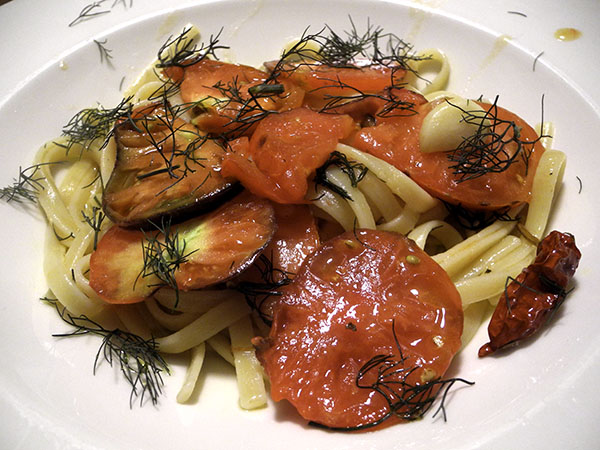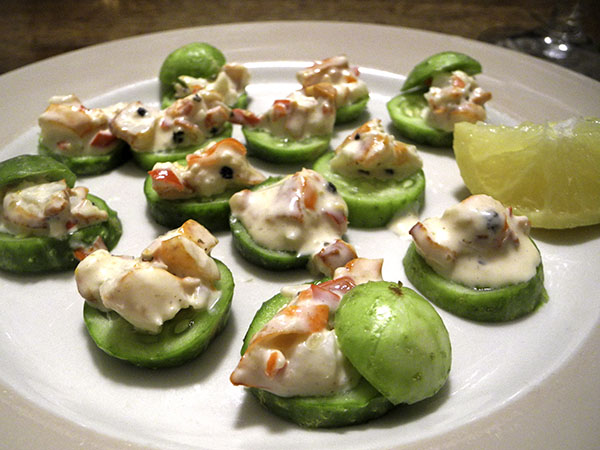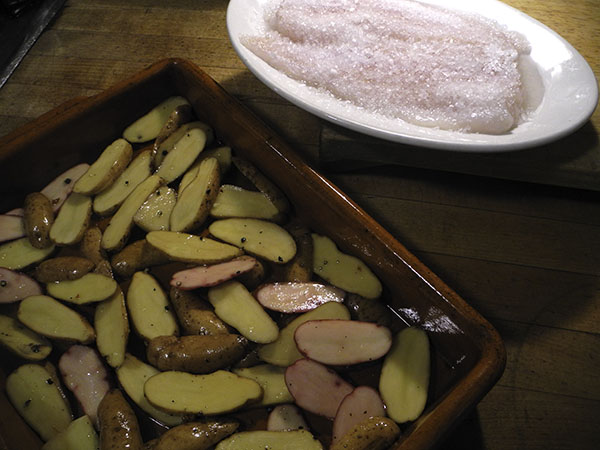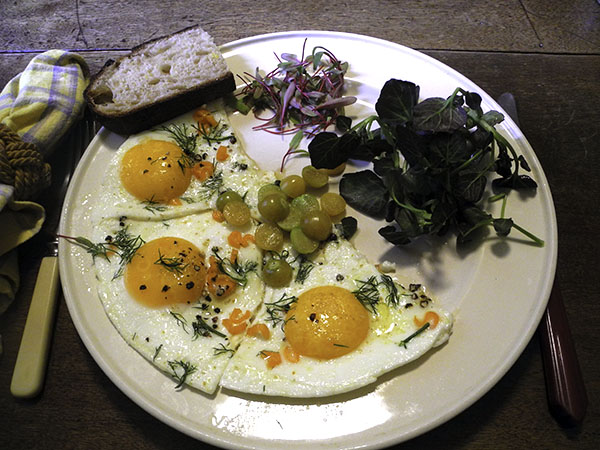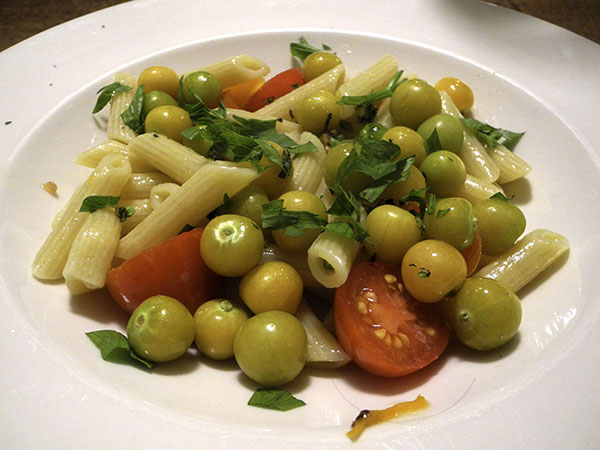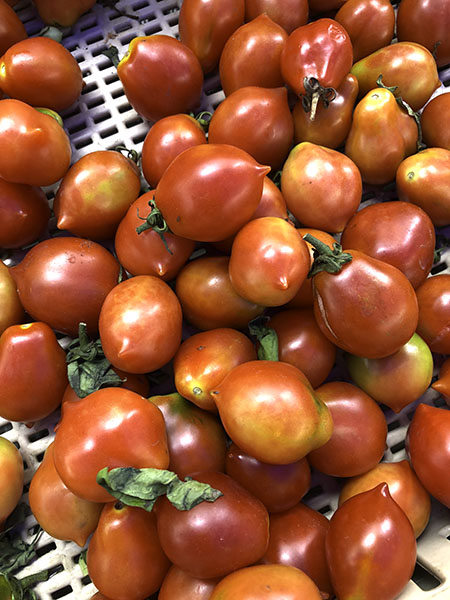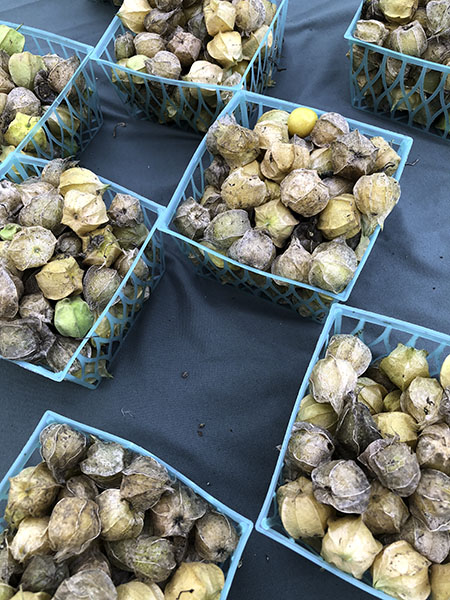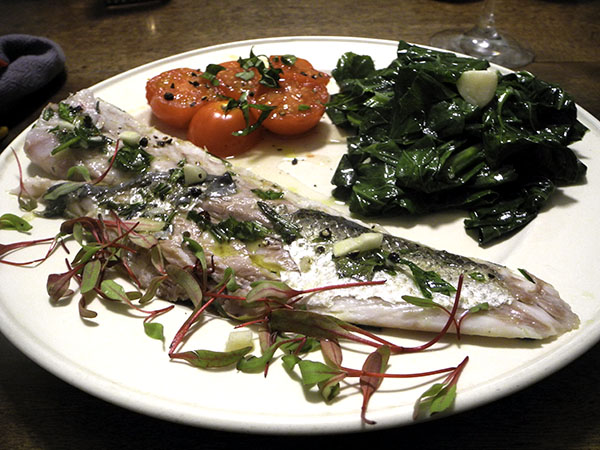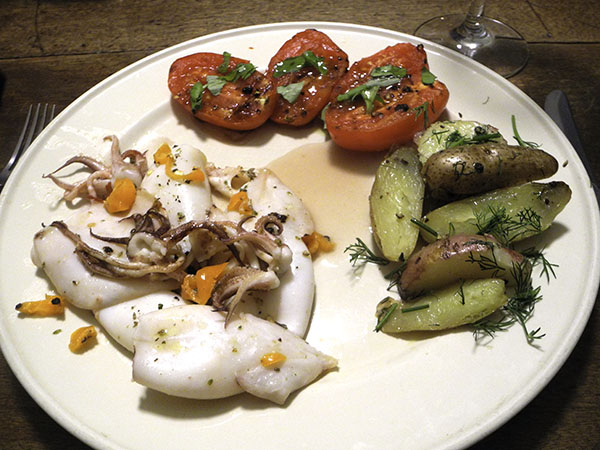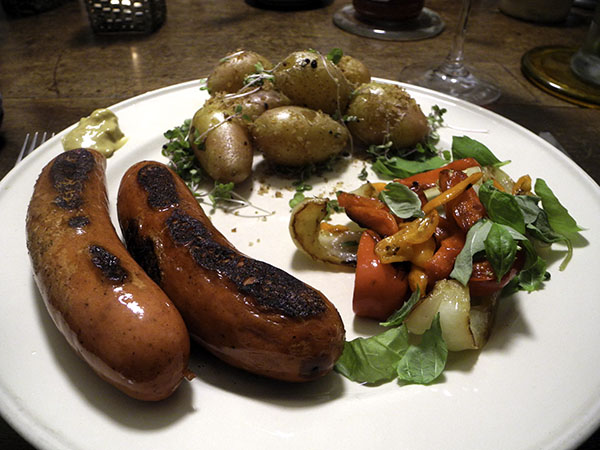
It looks like an entire summer garden made it onto that plate. It also looks every bit as baroque as the music we were listening to while enjoying it.
Last night I was looking for a way to cook bluefish in a way other than that I have for a while, but my time was running out, and I did have all of the ingredients I would need to prepare it ‘Greek Style’, and that’s the route I took once again.
Aside from the excellence of the basic recipe (little more than a few words that I found in a 2008 Chowhound discussion I uncovered a little over a year ago), I think Friday’s very easy decision is also redeemed by the fact that the individual ingredients will vary every time I pull them up, so it’s never the same meal.
This time, one of those variations was in the size of the fillets that I found in the market, and to which my fishmonger Paul Mendelsohn had pointed me: They were much smaller than any I had worked with before, so the fish tasted both fresher, or lighter, and sweeter than usual, and there was a less of the ‘blue’ flavor, what some people will describe as ‘fishy’, but which I happen to enjoy.
There were also lots of vegetables.
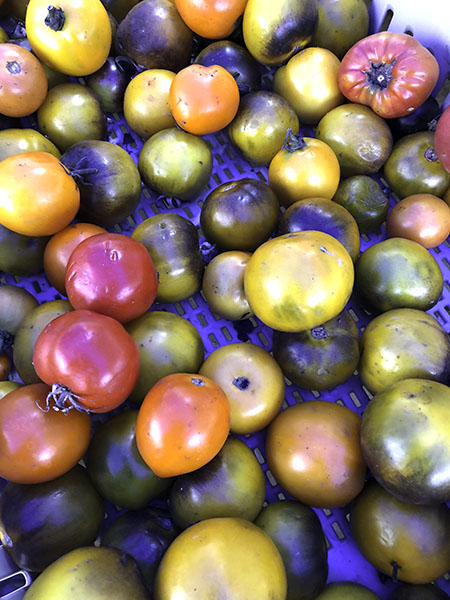
- four small (4 1/2-ounce each) bluefish fillets from Pura Vida Seafood Company in the Union Square Greenmarket, rinsed, rubbed with olive oil and a little Columela Rioja 30 Year Reserva sherry vinegar, seasoned with sea salt and freshly-ground black pepper, placed inside a vintage oval tin-lined copper au gratin pan, sprinkled liberally with a very pungent dried Sicilian oregano from Buon Italia and a finely-chopped piece of an ahi rico pepper (medium spiciness) from Alewife Farm, covered/layered with thin slices of one small red onion from Norwich Meadows Farm, thin slices of three different heirloom tomato varietals, also from Norwich Meadows Farm, and more than a tablespoon of chopped fresh oregano buds, from Norwich Meadows Farm as well, plus 9 pitted Gaeta olives from Eataly and several thin slices of a Whole Foods Market organic lemon, the pan placed inside a 425º oven and baked for about 8 to 10 minutes, the fillets arranged on the plates and garnished with micro red basil from Two Guys from Woodbridge
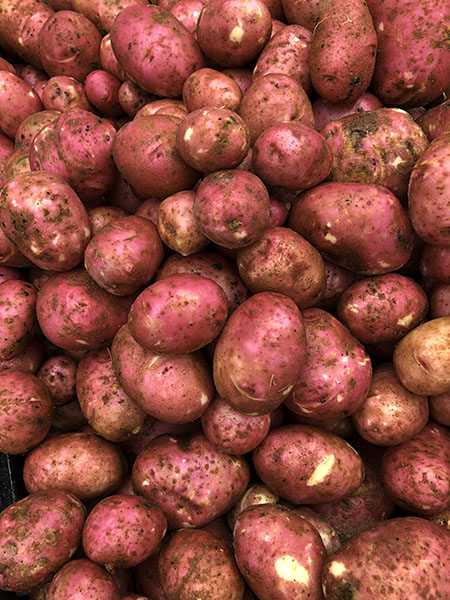
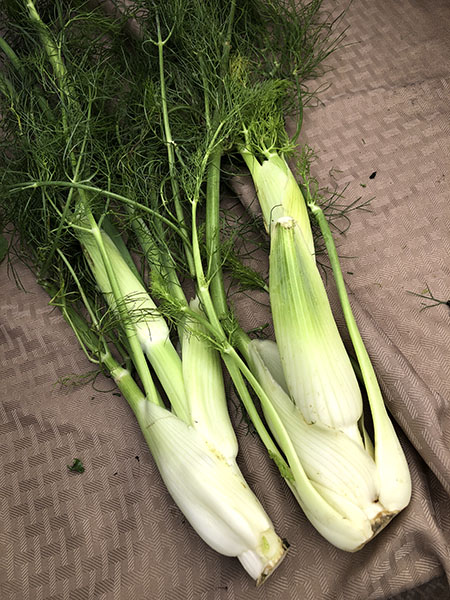
- almost a pound of medium size Norland potatoes from Berried Treasures Farm, halved, mixed in a bowl with cut sections of what appeared to be 2 small-ish (4 ounces each) examples of second-growth fennel bulbs, if that’s a thing, from Neversink Farm, olive oil (not too much), sea salt, freshly-ground black pepper, the potatoes and the sturdiest pieces of fennel arranged inside a favorite large shallow-sided unglazed extremely well-seasoned Pampered Chef oven pan and cooked in the same 425º oven for about half an hour, with the remaining pieces of fennel tossed into the pan at various times in the cooking process, depending upon their thickness, the vegetables then arranged together on the plates and garnished with flowering dill from Rise & Root Farm
- the wine was a Portuguese (Alentejo) white, Esporao Alandra Branco 2016, from Garnet Wines
- the music was the album, ‘Le Parnasse Français’, with the music of Jean-Féry Rebel, Jean-Marie Leclair, François Couperin, Michel Blavet, performed by Musica Antiqua Cologne, conducted by Reinhard Goebel
